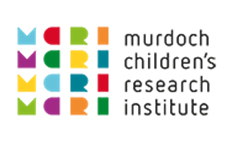What is Restacking the Odds?
RSTO focuses on five services available in most communities. Together, they help to boost children’s health development and wellbeing:
- antenatal care
- sustained nurse home visiting
- early childhood education and care
- parenting programs
- the early years of school.
Combining or 'stacking' evidence-based strategies across the early years (0-8 years) is more impactful than a single strategy. It's important that we apply strategies at the same time and sustain them.
RSTO focuses on how to work differently to improve outcomes for children, families and communities. It aims to develop the skills and knowledge of service providers and community-based early years initiatives for collecting, understanding and using evidence-based data to enable them to answer key questions including:
- Quantity: Are the strategies available locally in sufficient quantity, relative to the size of the target population?
- Quality: Are the strategies delivered effectively relative to evidence-based performance standards.
- Participation: Do children and families participate, and at the right dosage levels?
The RSTO Learning System
RSTO is co-designing a Learning System with communities and service providers. The system will enable communities and service providers to collect and use lead indicator data to understand and improve service and system performance.
Key elements of the Learning System:
- Technology platform: to collect, interpret and visualise data
- Improvement support program: to build data literacy and embed a model for continuous learning and improvement in services and communities. It will support services to respond, innovate and act on data
- Community of practice: to share learnings, experiences, knowledge and resources across organisations and the sector.
Making a difference
Through RSTO, service providers and communities will be better placed to:
- respond to the needs of children and families in their community, especially those experiencing vulnerability and disadvantage
- provide more effective and efficient services (and avoid wasting time, money and effort on approaches that fail to deliver results)
- learn and share with others striving to improve children’s outcomes
- capture evidence for insights, innovation and advocacy.
Theory of Change
Take a look at how RSTO aims to advance stacking to benefit children and families and service providers, communities and policymakers.
Project phases
The RSTO project involves three main phases:
- Building the evidence: Completed
The project’s first phase of research developed evidence-based indicators for communities and services to use to enhance service delivery. Unique indicators were developed for five key early childhood services. The indicators aim to help service providers, community initiatives and government policymakers better understand how services could be delivered across three dimensions: quality, quantity and participation. RSTO worked with seven communities to understand how the five key early childhood services were being delivered, and to develop and test how practical and helpful the indicator framework was to each community. Access the RSTO Indicator Guide. - Co-designing the RSTO Learning System: 2022-2025
This phase builds on the progress and lessons from phase one. RSTO is working with partners to co-design, implement and test a series of practical and scalable prototypes for RSTO's Learning System. The prototypes are informed by research that explores key barriers and enablers in the five Restacking early years' service settings and will help to support the collection and use of lead indicators to identify service strengths and gaps. Understanding service gaps will allow policymakers, communities and service providers to apply local approaches to address challenges. This phase will also raise awareness of the RSTO lead indicators and Learning System across national, state and local government. This will help RSTO's approach and tools to be adopted widely and enable more children to benefit from high quality, evidence-informed services in the early years. Learn how RSTO is applying RSTO indicators in partnership. - Scaling RSTO: 2025-ongoing
This phase will expand RSTO’s application and adoption on a much larger scale. The purpose of expanding the reach and application of RSTO is to accelerate system level change and make a sustainable difference to children experiencing adversity across Australia. Phase three will enable new communities across Australia to access RSTO resources and will include rigorous a evaluation.
Restacking the Odds is a collaboration between the Centre for Community Child Health at the Murdoch Children's Research Institute, Bain & Company and Social Ventures Australia.
RSTO would like to acknowledge the support of project partners the Paul Ramsay Foundation and Seer Data.
We acknowledge the Traditional Owners of the land on which we work and pay our respect to Elders past, present and emerging.





